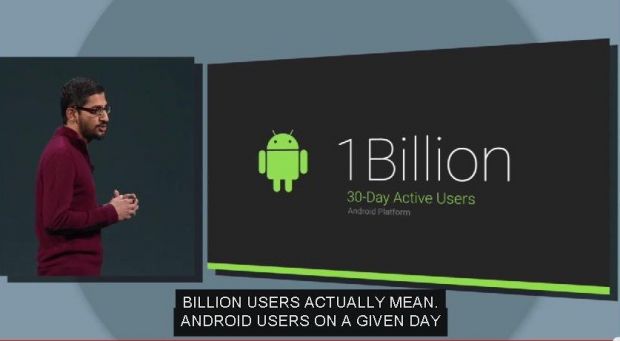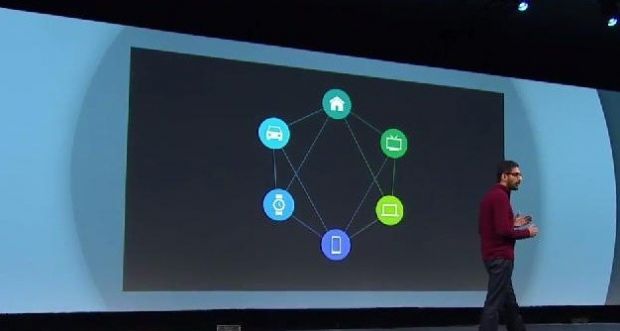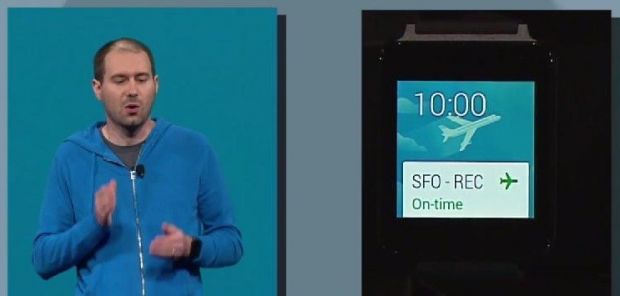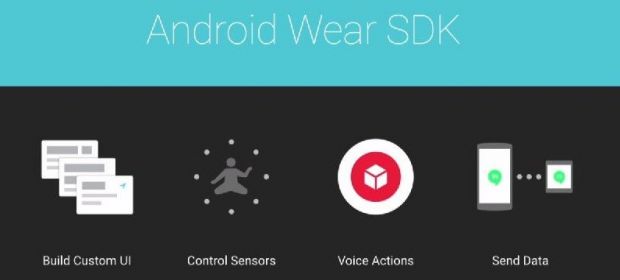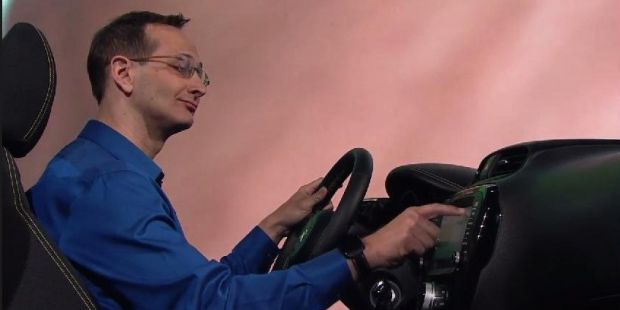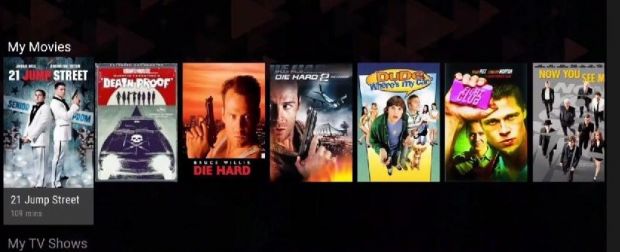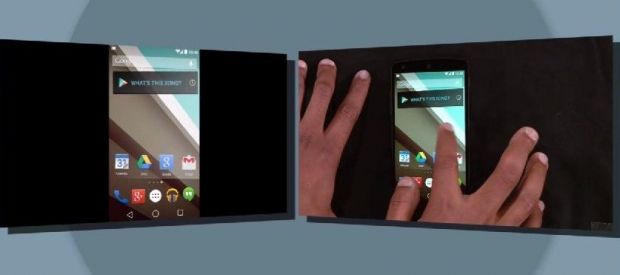Google I/O 2014 is set to kick off today with a long list of announcement everyone hopes to hear about.
The event will start at 9 AM PDT (4 PM GMT) with a keynote that everyone is waiting for.
What we're expecting
The giant said that this year it would focus on three topics – design, development and distribution, which means that there are plenty of things we could see introduced today.
On top of plenty of new features for its web tools, the company has confirmed that it will introduce the next Android version at the event, which is exciting news for all mobile tech lovers. Google Glass is also expected to make an appearance, as well as the new Android Wear devices that everyone wants to know more about.
It’s also quite possible for Google to reveal more about Project Loon and its driverless cars, but also about its brand new robotics department inside Google X.
Some of its web tools are also expected to receive an upgrade. For instance, since “design” is such an important part of the Google I/O 2014, we might even see the new Gmail interface announced.
Nest is also expected to be a rather big part of the Google I/O this year, and, more importantly, the company’s efforts to increase its presence in the Internet of Things market. After all, just yesterday, Nest announced a series of new apps that worked with the smart thermostat and which could be used to control your home environment from the distance, including running an extra washing cycle, opening the garage door or increasing and decreasing the heat within the house.
A Google set-top box is also expected to launch, as well as some new update to the Chromecast device (device mirroring would be nice, as well as a Google-made tool to cast your personal content).
Google’s Project Ara may end up on the topics list today as well, especially given the excitement around the idea. The modular phone with upgradable parts is understandably one of the coolest ideas that Google has had in a while and getting the opportunity to create your own device. If Google intends to expand the module-based idea to tablets, smartwatches and laptops, the I/O conference is the place where we’ll find out about this.
Live coverage
Softpedia will keep you updated with everything that’s being announced at the Google I/O conference and you’ll find all the information below. We’ll update often, so make sure to refresh the page. You can also check out the Google I/O conference via the live feed we’ve included.
The event kicked off with an elaborate Rube Goldberg machine bringing focus to a series of Google projects.
Sundar Pichai, who is wearing an Android Wear device, says the company is now focusing on the number of active Android users instead of how many devices are activated. "As of this year we have over 1 billion active users in the past 30 days," he says.
Android users sent 20 billion texts per day and take 94 million selfies, out of which some 30 million are duck faces. Users take over 1.5 trillion steps per day and check their phones over 100 billion times each day.
Google is going to unveil its new "L" Android version allowing everyone to take a look at the future of the company's mobile operating system.
The company says that the new OS will fit mobile devices, such as smartphones and tablets, but also desktop, fitting any type of device.
"Material design" is the new way Android L works and it focuses on user content. It makes it easy for designers to transport their designs to all screens and to colorize their apps to fit the brand.
Designers also receive familiar gridlines and other tools to make it easy to adapt the apps to all devices.
It's rather odd that Android has quit naming Android after something sweet and resumed to dub it "L." At least it maintains its alphabetical trend.
Android "L" looks really good and comes with a more flowy reaction to touch that Google calls “ripple effect”. The new Android looks rather different than previous versions, allowing users to have more control over what they want to see and what they don’t care about.
Incoming calls will no longer interrupt app activity, but will rather appear on top as a notification of sorts which you can either answer or dismiss. This will, for instance, no longer affect your game playing time.
Android “L” will recognize smartwatches connected to the device and will bypass the security measures imposed to the phone, such as the lock pin. When you don’t wear the device, you’ll have to input the code. This is called "personal unlocking."
Android now brings overlapping cards rather than the regular grid like interface we’re all used to. Switching between them on Android L seems to be faster than on KitKat, but this surely varies from device to device.
All app developers in the world can now display their public content in Google Search which means that if one of your links appears in the search results page, clicking on it will take you directly to the app rather than the website.
Android is now compatible with 64 bit devices, which opens up the performance capabilities of Android devices. Apple has already done this so it was rumored that the new Android version would also do the same.
Project Volta seeks to improve overall battery life for Android life. Battery Historian looks at the way a device was used, locates issues and sends Google feedback, which then helps the company optimize Android to compensate and save power.
Android L comes with a Battery Saver mode which you can adjust to your preferences so the phone can stay on for as long as you need to reach a charger.
The Android L SDK will become available tomorrow morning for everyone to download, along with screenshots of the OS.
Android L will come with security patches deployed in six weeks and a kill switch to help users control their phones even if they get stolen.
Google is making everything contextually aware to fit the situation you are in. For instance, if you are at work, you’ll get the right information. The company also seeks to make the voice enabled search essential for all connected devices to make searching for things easier, especially when driving and cooking, for instance.
People check their phones an average 125 times a day which is why Android Wear will display the relevant information.
Swiping through the cards on the smartwatch you can easily check out the most important details that come from the data on the connected smartphone.
You can use Android wearables to control the devices around you. For instance, you can tell your smartwatch to play some music, which he does by opening up the music app on your smartphone.
Apps can simply be downloaded to a phone and they’ll become available for Android Wear devices, as well as updated. The smartphone and the smartwatch are also in perfect sync when browsing for content, for instance.
Bringing Android to the cars
Even though its unsafe and illegal, people use their phones while driving so there has got to be a better way. The Open Automotive Alliance was announced to create a better experience.
Android Auto was just announced. The Android platform was redesigned for cars to bring apps that are essential to users in the car – navigation, communications and music, which are put front and center by Android Auto.
Android Auto is completely voice enabled so you can keep your eyes on the road and the hands on the wheel.
Compatible cars can connect to a phone and get access to the driver’s data, such as playlists and information about the most visited places.
For navigation, directions are spoken and displayed on the screen. Also, when you receive messages on your phone, you can check them on the screen and they are read out loud by the Android Auto. Also, replies can be sent via voice control.
The Android Auto SDK is also going to be available soon.
Google now has over 40 new partners to the Open Automobile Alliance.
Android TV
Just like any Android device, you can handle the data shown on TV more easily. Unlike computers, TVs are entertainment devices so the interface is easy to handle. You can access apps and games, as well as movies by content recommendations.
People can search by voice directly on your smartphone and send over the movies you want to see on the TV via Google Play Movies. You can check out data about a show, for instance, as well as the actors. Checking information about an actor will display an IMDB-like list of movies in which he or she played.
You can even interact with the TV via the wearable devices, such as the smartwatches Google announced.
As far as games go, Android users can play them on multiple devices. For instance, someone can play one over a tablet, while the other can handle the other player with a regular game controller.
Smart TV ranges from Sony, Sharp and TPVision will work with Android TV as soon as next year.
Chromecast
Outsell all major streaming devices combined. Google Cast will come to Android TV devices after becoming a hit in a lot of countries.
Back in February the Google Cast SDK was introduced to create apps for all device. There are some 6,000 developers working on this and nearly over 10,000 apps compatible with Chromecast.
A new apps discovery experience is now being announced, as well as a new feature that didn’t draw too many applauds. From now on, Chromecast will be able to receive content from people that are not connected to your WiFi network, bypassing the need of sharing the WiFi password.
While this makes Chromecast a bit more exposed, it keeps people’s Internet passwords safe.
The Chromecast ambient experience called Backdrop was introduced to help users pick out backgrounds to be displayed on the screens of their TVs while content is not being cast, including personal photos. Users can choose from a series of topics they may enjoy.
You can even ask your phone “What’s on my Chromecast” to get more information about the picture you’re viewing on the TV screen.
Android device mirroring is also possible for Chromecast users now. All you have to do is click on the cast screen and check out the content there on the big screen. This also works for live action, such as the camera, which is a really useful feature.
Google for Work
Along with Googlr L, you’ll be able to separate between personal apps and business apps. In fact, companies can buy apps in bulk and deploy them to employees. Samsung Knox has played a really important role in this effort.
By fall, there will be a certified Android program for companies to bring Work apps to employees. Aside from productivity tools such as document editors, and, now, Slides, which Google introduced today.
These can be handled from mobile devices, which means they’re perfect for work presentations.
Native Office Editing
Google Docs has also received a lot of new features, including the famous red lining, which people miss when they don’t work with Microsoft’s Office.
Google Drive has over 190 million monthly users. All Google Work functionality is added to Drive for work. All data is encrypted in transit and on server and provides businesses with enhanced admin controls for $10 per month per employee.
Google Gifts
Those present at the conference are going to receive either the Samsung or the LG watch and a Motorola smartwatch as soon as it becomes available, making everyone else envious.
The keynote is now officially over, nearly two hours after it started.
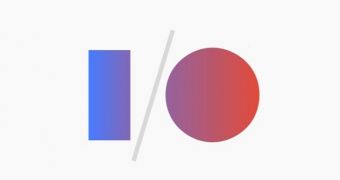
 14 DAY TRIAL //
14 DAY TRIAL // 
